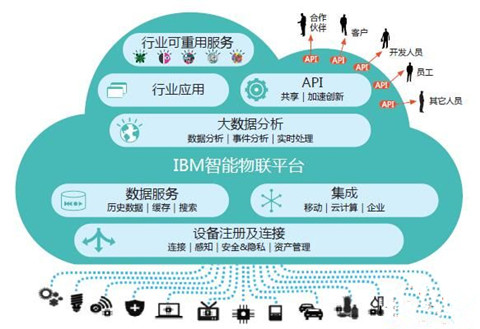Electric Imp Launches Cellular IoT Connection Support
Rogers put the findings together in a report, TheEconomics of IoT, which compares the pricing models of the three major cloud platforms, and aims to help enterprise decision-makers understand the cost implications of different IoT deployments.
But even when a pricing model appears to be fairly simple, the impact of underlying nuances is often unclear, Rogers said. For instance, each provider has its own definition of a message. A keep-alive messageof just a few bytes is free on some IoT platforms, but charged for on others. Some cloud providers round-up small messages such as this to the nearest kilobyte. This results in a 64 byte ping message being charged for 17 times the capacity, according to the research.
This site is operated by a business or businesses owned by Informa PLC and all copyright resides with them. Informa PLCs registered office is 5 Howick Place, London SW1P 1WG. Registered in England and Wales. Number 8860726.
Devising a Plan for IoT Data Protection in a GDPR Era
In that light, theres a business opportunity for cloud brokers in helping enterprises unravel this complexity, Rogers said. Companies selling cloud services could become broker-dealers and launch offerings that resolve and ease this complexity, allowing enterprises to easily purchase an offering that suits their business.
AT&T to Launch NB-IoT Network Next Year
Microsoft is the cheapest provider when the message size, number of devices and number of messages sent are all relatively high, but the buyer must predict their capacity needs in advance, according to Rogers. Meanwhile, AWS is the least expensive IoT provider for those smaller deployments more typical in enterprises today, according to the research. In deployments of less than 20,000 devices each sending an average of fewer than three messages per minute at under 6 KB each, AWS is the cheapest provider in more than three-quarters of scenarios tested.
Costs related to AWS IoT Core, Google IoT Core and Microsoft Azure IoT Hub are structured so differently that manual cost comparisons are almost impossible, according to Owen Rogers, director of 451 Researchs Digital Economics Unit and architect of the Cloud Price Index. Aiming to ease that challenge, 451 Research recently used machine learning including Python and Watson Analytics to compare pricing for those cloud platforms and output the cheapest options for different scenarios.
Web page addresses and e-mail addresses turn into links automatically.
Q&A: Cisco Exec Dishes on Industrial IoT Security and DeOS
Using machine learning, 451 Research aims to make it easier to compare IoT cloud platform pricing.
451 Sorts IoT Cloud Platform Pricing with Machine Learning
Digital Manufacturing: Powering the 4th Industrial Revolution
Applying a variant of the age-old idiom, understanding the best bang for the enterprise buck when it comes to selecting a cloud platform for IoT deployments is rocket science.
The analysis used Python to generate the training data. The Python simulator priced out an IoT configuration based on nine pricing parameters, and outputted the cheapest provider for a specific scenario. It did 10 million iterations, and uploaded the data to Watson Analytics, which trained a model using the data and visualized the information as a decision tree.
The six best-paid IoT programming languages
The top 20 industrial IoT applications
Allowed HTML tags: em strong blockquote br p
Vendors, Analysts Release State of the Edge Report
Microsofts Azure IoT Edge Now Generally Available
IoT Institute is part of the Knowledge & Networking Division of Informa PLC
Microsoft Azure was the cheapest at scale, the analysis found, while AWS provides better value for smaller IoT deployments. Google Cloud was never found to be exclusively the cheapest provider, according to the research.
Lines and paragraphs break automatically.
I dont think many service providers are doing that today. Its an opportunity to be realized, he said. Start asking service providers for help in this matter.
All our research across cloud suggests cost is a major factor in the decision, but the cloud market is so complex. Someone might choose an IoT platform that is more expensive because they think that cloud provider is really stable, Rogers said. My argument is that cost has to be reasonable.

